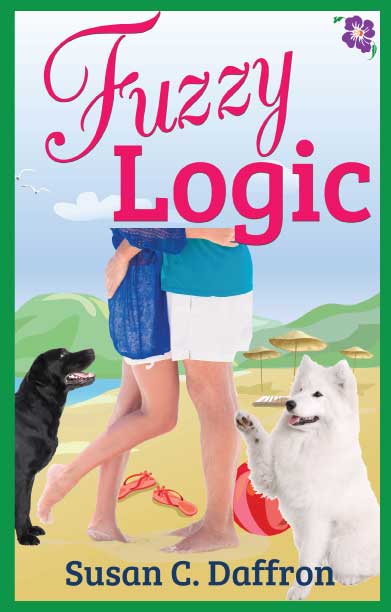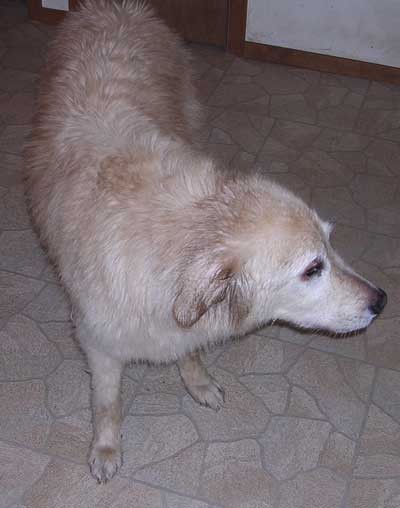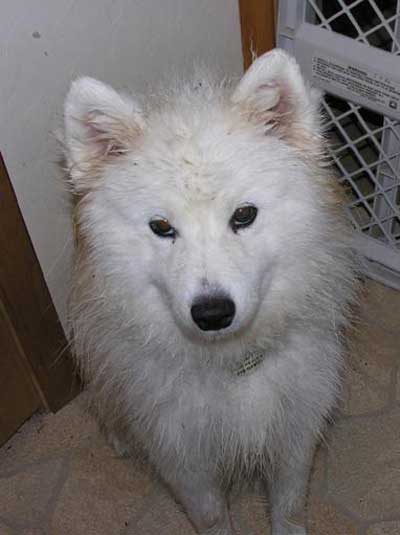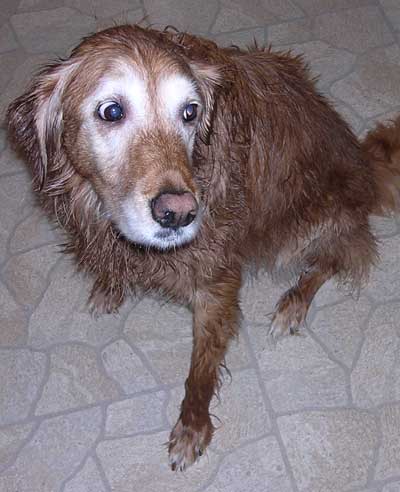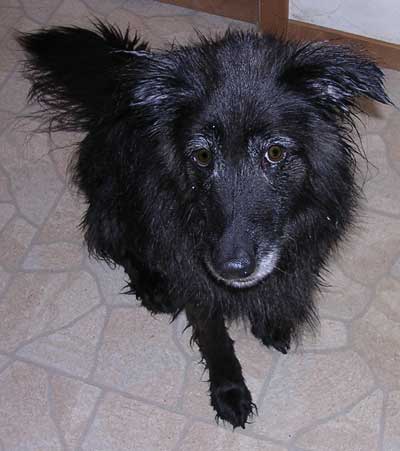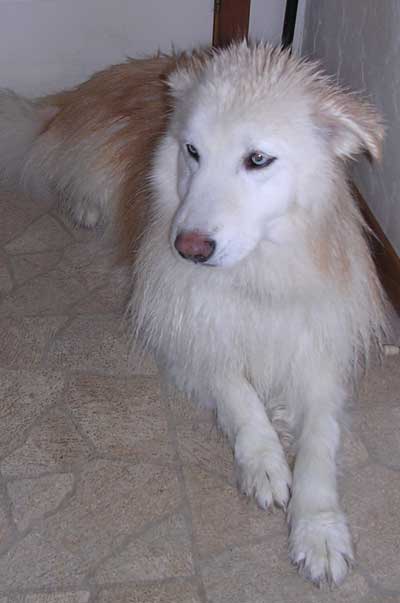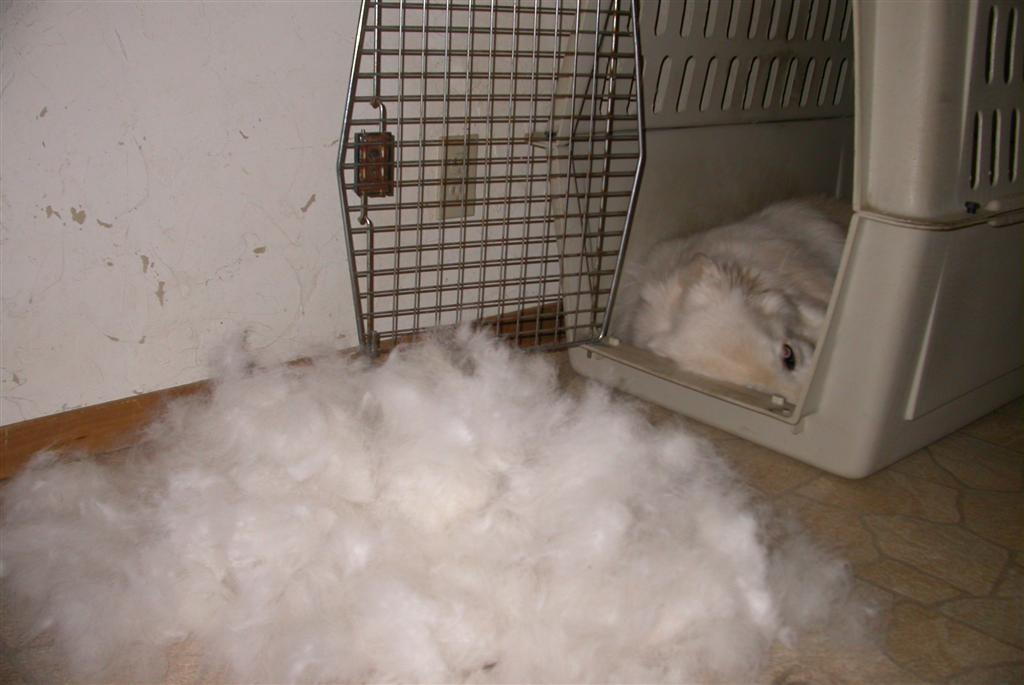The second book of my Alpine Grove series, Fuzzy Logic, includes a scene of dog washing gone horribly wrong.
I’m happy to report that I have never ended up standing in the back yard naked looking for a soapy dog. But I have had many adventures in dog washing.
One thing I’ve noticed is that different dogs have different views and approaches to dog washing. Here is a list of approaches my dogs have taken toward bath time.
1. Be huge
My dog Leto was a Great Pyrenees mix. Although he wasn’t a big as those 120-pound purebreds, he was still a good-sized dog. The downstairs shower where I wash the dogs is what the home improvement stores call a “shower stall.” In other words, it’s small. Much smaller than Leto. Washing all sides of the big dog was a challenge. Eventually, he’d decide to lie down in the tiny space. Getting 80 pounds of soggy dog off the floor of a 32×32 shower stall when the dog isn’t cooperating isn’t easy. It’s how Leto earned the nickname of “The Immovable Object.”
2. Be short
I use a hand-held sprayer to wash my dogs. This approach works well, except when the dog is too short for the sprayer to reach. Fiona is a Samoyed, which means she has ultra fur. Because she’s a double-coated dog, it takes ages to wash and rinse her. And if the sprayer doesn’t quite reach the underside, you end up with a two-toned dog.
3. Be still
My dog Tika was the inspiration for Tessa the extremely hyperactive spaz dog in Chez Stinky, the first of my Alpine Grove novels. Tika was a force of nature; she was constantly in motion. Yet oddly enough, she was the easiest dog for me to wash. When the water touched her delicate retriever body, she became a statue. Dogs that don’t move are easy to wash.
4. Be offended by cold water
Leia was the first dog we adopted after moving to Idaho. Being the first dog has its challenges. Early in my dog washing career on a hot summer day, I decided to wash Leia outside using the hose. I had done this with dogs I’d grown up with and they thought it was fun. However, Leia was definitely not amused. Maybe it’s because even in the summer, the water that comes out of a 300-foot well is really cold. In any case, she took it poorly and all subsequent baths were performed inside.
5. Embrace toweling off
After bathing comes drying. For most of my dogs, the best part of being washed is the toweling-off process. Cami in particular loved to push her nose into the towel and get into the rubbing and shaking.
6. Never, ever learn the shake command
For years, I have read how “easy” it is to teach your dogs to shake on command. So far, I have a zero out of six record of teaching any dog to shake. Whether it’s after a bath or a rainstorm, no dog of mine has ever “gotten” what it means to shake water off, no matter how enthusiastically I praise them for a fine shake. So instead of shaking off copious quantities of excess water in the shower, all dogs wait until they are outside the evil confines of the shower stall and shake all over the bathroom. If you ever encounter a fine patina of dog hair on bathroom walls, now you know why.
7. Pout profusely
Of course, after every bath, it’s necessary to pout, sulk and generally look unhappy. Drying is hard work when you’re covered with fur. Sulking is more fun when you repeatedly attempt to rub your body on everything. Of course, then comes the unfortunate reality that post-bath brushing is inevitable once you’re dry. Be prepared.
